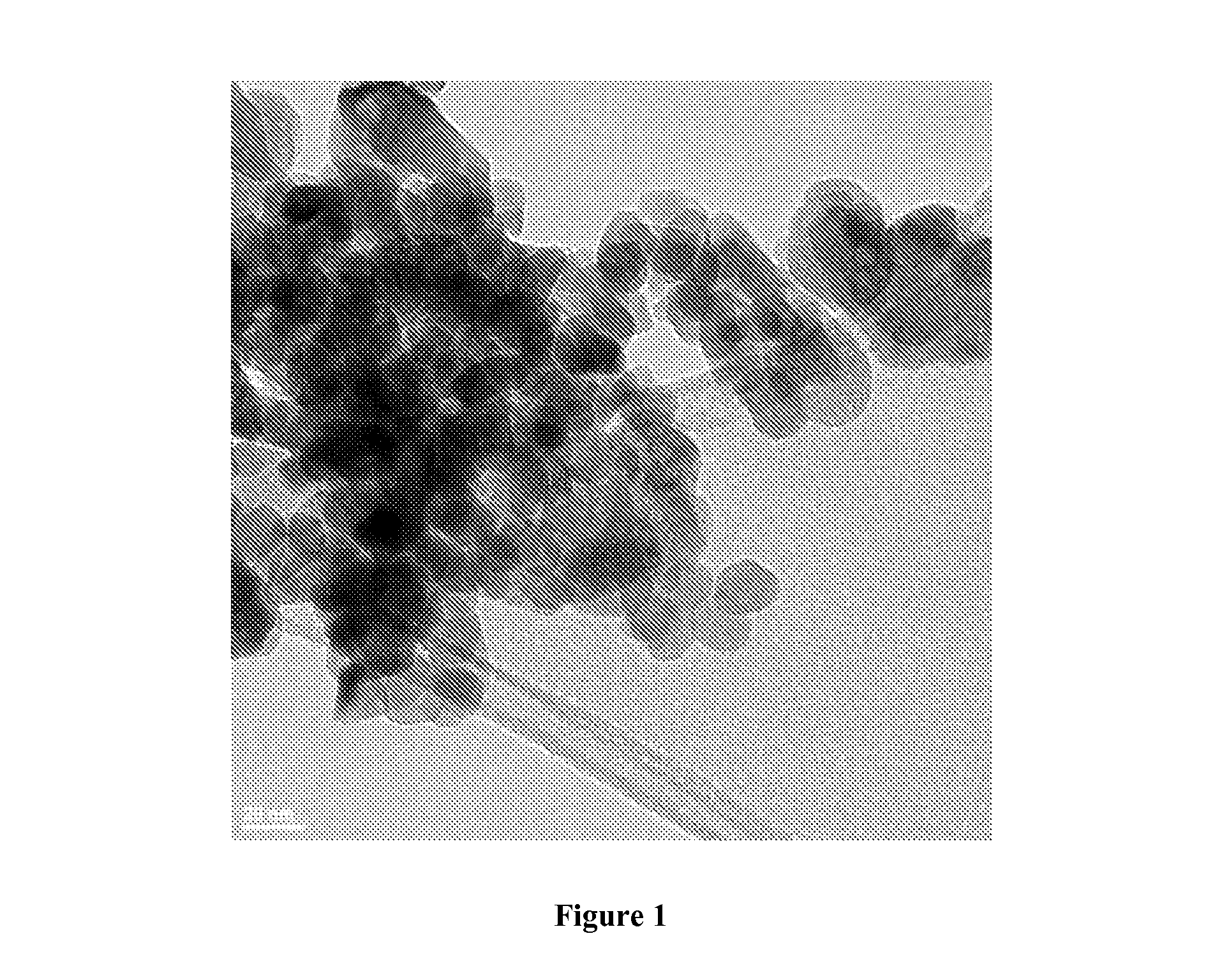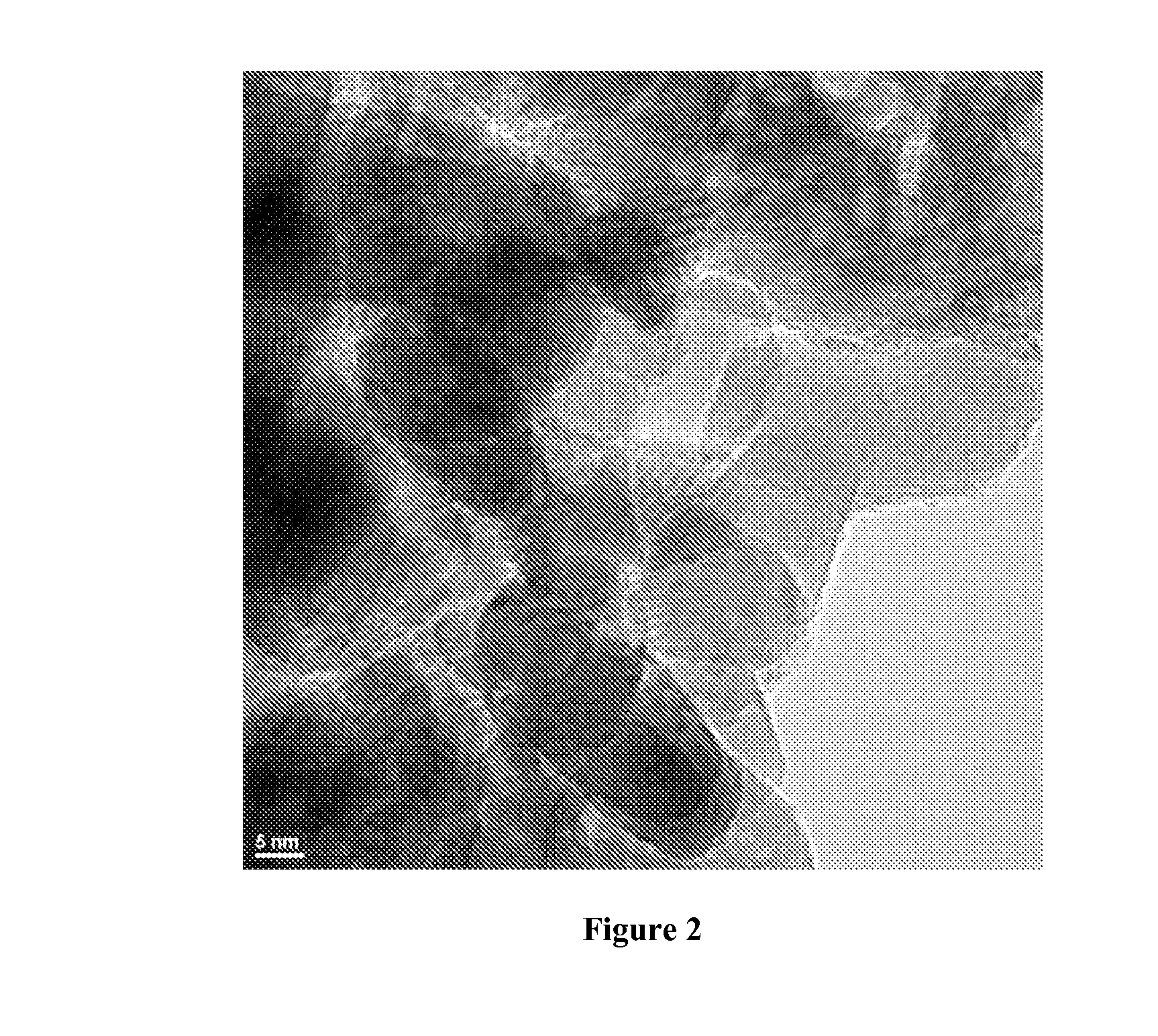Reduction catalysts
a catalyst and reduction technology, applied in the field of heterogeneous catalysts, can solve the problems of various limitations of known approaches, and none of such methods are used industrially in the manufacture of specialty or industrial chemicals
- Summary
- Abstract
- Description
- Claims
- Application Information
AI Technical Summary
Benefits of technology
Problems solved by technology
Method used
Image
Examples
example 1
Synthesis of Pt / Rh Zirconia Catalyst by Incipient Wetness Impregnation (Single Fix)
[0062]An aqueous solution of platinum nitrate and rhodium nitrate (20 ml in total volume containing 0.41 g Rh and 1.17 g Pt) was added to a zirconia support (100 g, 90-180 1m particle size) in multiple portions using a pipette over a period of 10 min. During the addition of the solution, the mixture was agitated to evenly impregnate the support. The sample was dried in a 600 C oven overnight under a dry air purge. The sample was then reduced under forming gas (5% H2 and 95% N2) atmosphere at 3500 C for 6 hours with 20 C / min temperature ramp rate. The final catalyst contained 0.41 wt % Rh and 1.17 wt % Pt.
example 2
Synthesis of Pt / Rh Zirconia Catalyst by Incipient Wetness Impregnation (Separate Fix)
[0063]An aqueous solution of (NH3)6Rh(OH)3 (10 ml in total volume containing 0.12 g Rh) was added to a zirconia support (50 g, 90-180 1m particle size) in multiple portions using a pipette over a period of 5 min. During addition of the solution, the mixture was agitated to evenly impregnate the support. The sample was dried in a 600 C oven overnight under a dry air purge and then cooled to room temperature. To this material, an aqueous solution of platinum nitrate (10 ml in total volume containing 0.27 g Pt) was added in multiple portions using a pipette over a period of 5 min. During addition of the solution, the mixture was agitated to evenly impregnate the support. The sample was dried in a 600 C oven overnight under a dry air purge. The sample was then reduced under forming gas (5% H2 and 95% N2) atmosphere at 3500 C for 6 hours with 20 C / min temperature ramp rate. The final catalyst contained 0...
example 3
Use of Pt / Rh Catalysts for Selective Hydrodeoxygenation of Glucaric Acid Monolactone in a Batch Reactor
[0064]Catalyst (20 mg) produced in accordance with the general description set forth hereinabove was weighed into a glass vial insert, followed by addition of a solution (100 1l in total volume) containing glucaric acid monolactone (0.8 M) and HBr (0.6 M) in acetic acid. The glass vial insert was loaded into a pressure reactor and the reactor was closed. The atmosphere in reactor was replaced with hydrogen and pressurized to 900 psig at room temperature. Reactor was heated to 1600 C and maintained at 1600 C for 1.5 hours with orbital shaking. After 1.5 hours, the shaking was stopped and reactor was cooled to 400 C. Pressure in reactor was then slowly released. The glass vial insert was removed from reactor and centrifuged. The clear solution was diluted with deionized water and analyzed by Fast-MS (with deuterated adipic acid d-8 as internal standard) and HPLC to determine the yiel...
PUM
| Property | Measurement | Unit |
|---|---|---|
| pore diameter | aaaaa | aaaaa |
| particle sizes | aaaaa | aaaaa |
| particle sizes | aaaaa | aaaaa |
Abstract
Description
Claims
Application Information
 Login to View More
Login to View More - R&D
- Intellectual Property
- Life Sciences
- Materials
- Tech Scout
- Unparalleled Data Quality
- Higher Quality Content
- 60% Fewer Hallucinations
Browse by: Latest US Patents, China's latest patents, Technical Efficacy Thesaurus, Application Domain, Technology Topic, Popular Technical Reports.
© 2025 PatSnap. All rights reserved.Legal|Privacy policy|Modern Slavery Act Transparency Statement|Sitemap|About US| Contact US: help@patsnap.com



